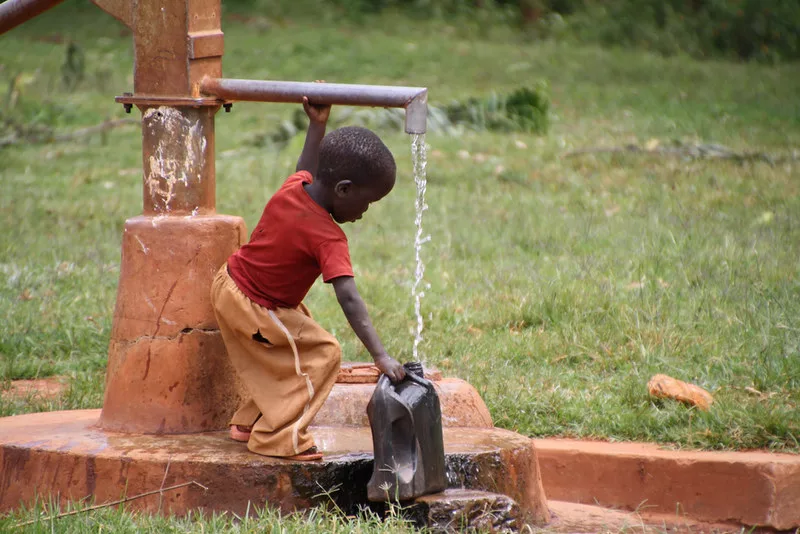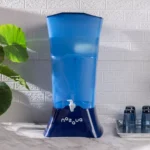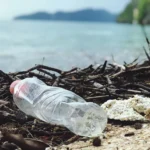
Critical Facts About Waterborne Disease in the United States and Abroad
By John Hawthorne
If you live in a developed country, and I assume many of you are if you’re reading this, waterborne diseases probably aren’t something you typically worry about. But did you know that poor water sanitation and a lack of safe drinking water take a greater human toll than war, terrorism and weapons of mass destruction combined?
Even in the United States, pumps, pipes and purification facilities could all fail, leaving you susceptible to waterborne diseases.
So what exactly are waterborne diseases? How many people are actually affected by them? How do we keep our water clean and safe? To what extent are people are dying from these diseases, and what can we do to prevent that from happening? We’ll answer all of those questions here.
How Much Drinkable Water is There?
First things first. Before we can understand why waterborne diseases are so prevalent, we need to have a clear understanding of how much drinkable water is actually available.
While nearly 70 percent of the world is covered in water, only 2.5 percent of it is drinkable. And of that, only 1 percent of it is easily accessible, with the rest trapped in glaciers and snowfields.
Since most of the Earth’s fresh water is frozen at the North and South poles, that leaves the rest of the fresh water in surface water and groundwater. Surface water is found in the Earth’s lakes, rivers, and streams. Groundwater is just surface water that has made its way into the soil.
You might be wondering if we will ever run out of fresh water. Our population is rapidly increasing, and most of our uses for fresh water are increasing right along with it. So, will we always have enough fresh water to go around? We will.
The Earth is very efficient when it comes to recycling its water. Every drop of water we use continues through the water cycle. Water on the ground and in lakes and streams is evaporated into the clouds, and then sent falling back down to the ground. Although we may never run out of fresh water, we still need to do our part to be sure we keep it as clean as we possibly can.
About Waterborne Disease
A waterborne disease is simply any disease that is contracted by drinking dirty or contaminated water. In underdeveloped countries the water is typically contaminated by human and animal feces or a general lack of sanitation. In more developed countries, it can be caused by faulty pipes, pumps, or purification facilities. It’s even possible to get a waterborne disease by eating food that was contaminated by dirty water.
Some of the most well known waterborne diseases are polio, malaria, cholera, and diarrhea. All of these diseases are serious health threats and could lead to death.
- Polio attacks the nervous system and causes paralysis, difficulty breathing and sometimes death.
- When you think of malaria you probably think of mosquitos, but malaria is also a waterborne disease. Malaria is a life threatening illness that causes high fever, chills, vomiting, and even coma.
- Cholera is an infection of the small intestine that, if left untreated, can be fatal.
- Diarrhea may seem harmless enough, but believe it or not, in developing countries without access to modern medicine and clean drinking water, it kills about 2.2 million people per year, usually due to severe dehydration.
The most common waterborne disease that affects tourists in under-developed countries is traveler’s diarrhea. Also known as Delhi Belly or Tourist Trot, an estimated 10 million travelers are affected by it each year. The biggest risk factor to developing travelers diarrhea is your destination.
If you’re traveling to an area that has a high occurrence of waterborne diseases, do your due diligence to prepare so that you don’t contract anything while you’re on the road. We recommend carrying a pack of Aquatabs or an Uzima Z-Source water bottle with you during travel.
The Key Statistics
The WHO/UNICEF Joint Monitoring Programme 2017 report on the progress of drinking water recently published its 2017 update. The report finds that in 2015, 29% of the global population (2.1 billion people) lacked safely managed drinking water services – meaning water at home, available, and safe.
This widespread inability to get safe drinking water is very serious and should not be taken lightly. Every year there are more than 3.4 million deaths from waterborne diseases, making it the leading cause of disease and death around the world.
What’s worse is that most of those deaths are young children, about 4,000 a day. At any given time, close to half of the population in the developing world are suffering from some type of waterborne disease. In 2013 to 2014, waterborne diseases caused 289 cases of illness, 108 hospitalizations, and 17 deaths in the United States.
Keep in mind these are deaths due to the effects of unsafe drinking water, most of which are completely preventable.
Keeping Water Free of Waterborne Disease
They say it’s always better to be proactive instead of reactive, so the best thing to do to keep people from getting waterborne diseases is to use clean water. However, that’s not always as easy as it sounds. It’s estimated that 780 million people don’t have access to an improved water source.
As was already mentioned, most people have access to clean water in America. The water supply and sanitation in the United States is one of the cleanest and most regulated in the world. That being said, nothing is perfect, and Americans can still be exposed to unsafe drinking water.
As many as 63 million people, almost a fifth of the country, from rural central California to the boroughs of New York City, were exposed to potentially unsafe water more than once during the past decade.
Industrial dumping, farming pollution, and pipe deterioration are the main causes of the contaminated water. In some instances it took nearly two years for the issues causing the contaminated water to be resolved.
The good news is that there are things we can do to keep our water clean and safe.
Recycle
Recycling items, and properly disposing of items that cannot be recycled, keeps them from getting into to our rivers and oceans to contaminate the water. Even disposing of your cigarette butts properly will go a long way toward keeping our water clean.
Minimize Chemicals
The best way to keep chemicals from getting into our water is to simply not use them. There are plenty of all natural, chemical free products we can use that will cause no environmental impact. From laundry detergent to window cleaner, always go natural. And keep in mind – not all chemicals are bad. Know the chemical names of common compounds to distinguish good from bad.
Participate in Cleanup Efforts
The best way to keep chemicals from getting into our water is to simply not use them. There are plenty of all natural, chemical free products we can use that will cause no environmental impact. From laundry detergent to window cleaner, always go natural.
Reuse Water
Set up a home rainwater capture system to maximize your home water use. A basic rainwater system channels water from gutters into a collection barrel. Use this water to water your flowers, wash your car, or use it to make a natural cleaning detergent.
Prevention
So, how can we prevent waterborne diseases? This may seem an obvious answer, but we need to keep our water clean. Clean water is a prerequisite for reducing the spread of waterborne diseases. People need to be provided safe and sanitary ways to dispose of feces, as well as ways to store their water to keep it from becoming contaminated. Dirty water has to be disinfected to stop the growth of pathogenic organisms and to protect people’s health.
We can also think outside of the box. For example, the UZ-2 is a simple stacked water filtration system that contains a hollow fiber membrane filter which protects against bacteria, viruses, and cysts. It will filter 16L of water at a time, making it ideal for families who are struggling to find adequate clean water.
Conclusion
Waterborne diseases may not get the funding or attention it should or that other diseases get, but it is a very serious illness that kills millions of people every year.
On a large scale, this is a serious issue faced by billions in developing countries without the access to resources we have in developed countries. On a smaller scale, though, people are still dying in the United States from drinking contaminated water, even with these resources.
Waterborne diseases are the leading cause of death around the globe, and it’s almost inexcusable. Keeping our water safe and clean to prevent the spread of disease should be a high priority. It’s time to clean the water that has been contaminated and keep our clean water safe.




